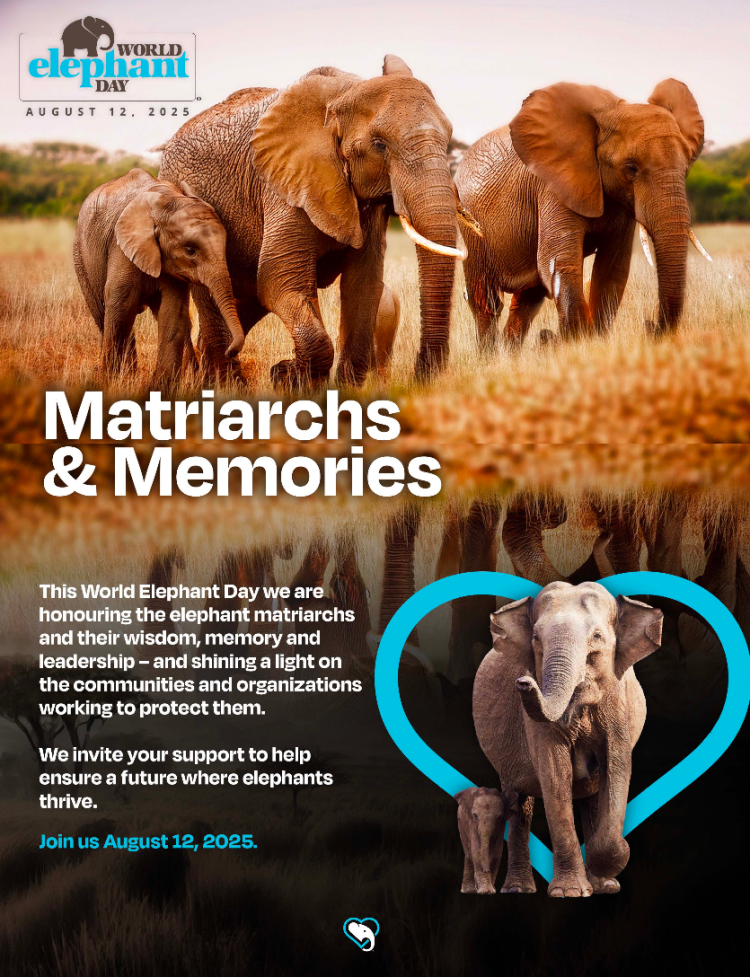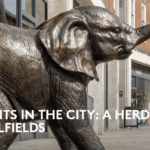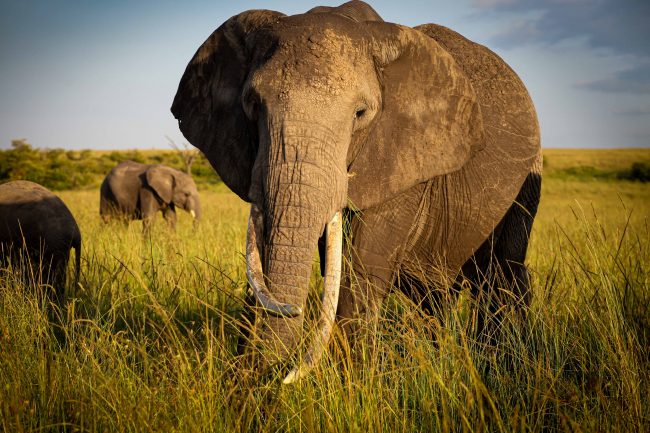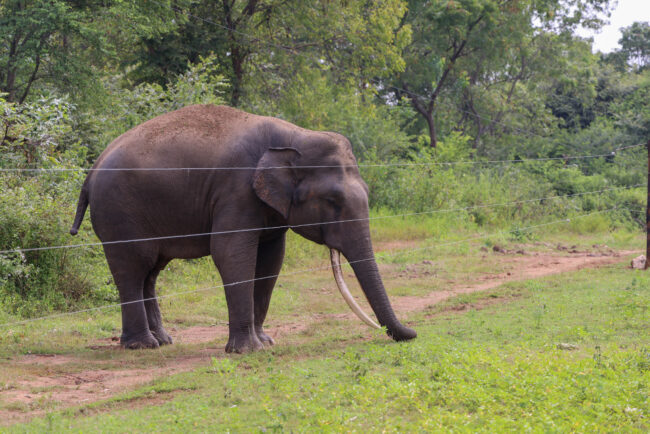
This World Elephant Day, stand with the matriarchs, the memory-keepers of the wild. Their future depends on what we do now. Join the movement to protect elephants — donate, share their story, and demand lasting change.
I first saw elephants in the wild when I was five years old. My family was touring Amboseli National Park in Kenya. Backdropped by flat-topped acacias, sweeping grasslands, and Kilimanjaro’s snow-capped summit, herds of elephants moved with calm majesty. I was transfixed. Five adults paused beneath a tree, reaching up with their trunks to grasp something delicious in the branches. One bull even lifted himself onto his haunches. As they fed — stripping bark, breaking branches, scraping their immense hides against the trees — they filled the air with a cinematic uproar.
I’ve never again seen so many elephants in one place.
At the time, Kenya’s elephant population hovered around 130,000 — already a sharp decline from previous decades. In the years that followed, that number would plummet to under 20,000 by 1989.
It was part of a broader trend. A century ago, elephants roamed freely across East Africa. People lived on islands in a sea of elephants. Today, those islands have expanded and fused into a sea of people — with elephants reduced to shrinking, fragmented habitats. Poaching has contributed to their decline, but ivory was never the core issue. At the heart of the crisis is a more complex struggle: the daily, often invisible conflict between farmers and elephants.
A single raid by an elephant can wipe out a family’s entire crop in one night. This leads to food insecurity, economic hardship, and understandable resentment. In some regions, farmers retaliate with spears or poison. As one Tanzanian farmer put it: “We are not against elephants. We are against hunger.”
Actor and environmental activist Daryl Hannah lends her voice — and Peter Gabriel, his music — to the official World Elephant Day 2025 campaign video, bringing heart, visibility, and global reach to the cause.
This struggle is even more acute in Asia. In India, Sri Lanka, Thailand, Nepal, Myanmar, and parts of Indonesia, elephants — smaller and more endangered than their African cousins — are caught in the same fight for space and survival. Rapid development, road construction, deforestation, and industrial agriculture have decimated elephant habitats. In India alone, elephants have lost over 80% of their historic range. Migration corridors are blocked by railways, plantations, and towns. In search of food and water, elephants are forced into human settlements — with tragic consequences.
Elephants are remarkably resilient. They can live up to 65 years. Females reach puberty around age 11, give birth after a 22-month pregnancy, and remain fertile into their late 40s. With ideal conditions, elephant populations could grow by up to 7% per year. The key — the only real long-term solution — is coexistence. But this requires a paradigm shift in how we approach conservation.
“We admire elephants in part because they demonstrate what we consider the finest human traits: empathy, self-awareness, and social intelligence. But the way we treat them puts on display the very worst of human behavior.”
— Graydon Carter
Conservationists in Africa and Asia are finding innovative solutions to the human-elephant conflict:
To learn more about how you can help, visit www.worldelephantday.org

A New Paradigm for Elephant Conservation
A persistent misconception is that the rights of local and Indigenous communities are at odds with wildlife conservation. The reality is the opposite: those who live closest to elephants often have the most at stake in their survival. Long-term conservation depends on their leadership, knowledge, and stewardship.
Research confirms that approaches rooted in biocultural diversity — combining ecological protection with cultural values and local participation — deliver lasting results. Cultural traditions often contain deep ecological knowledge. In many Asian societies, elephants are considered sacred. That reverence, if cultivated and supported, can be a foundation for coexistence.
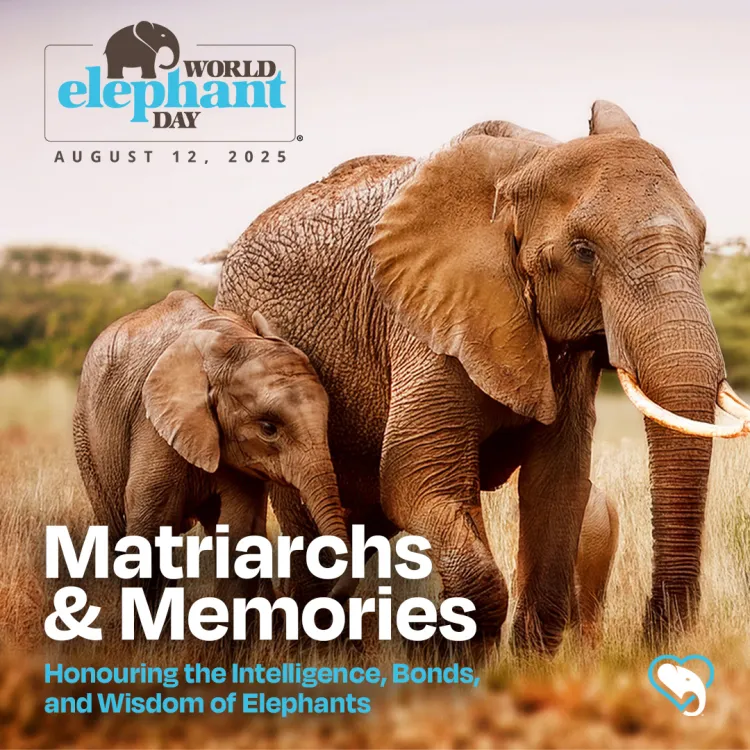
This World Elephant Day: Support Coexistence
This year, we are focusing on the people who live closest to elephants — communities who must balance food security with conservation, and who understand that the threat elephants pose to their livelihoods is mirrored by the threat humans pose to elephants’ survival. And, in particular, we are reaching out to the matriarchs in those communities.
Across Africa and Asia, communities are developing creative, low-cost, and effective solutions — beehive fences, chili barriers, early warning systems, crop alternatives — to reduce conflict and allow elephants to live freely and safely. With your help, we can support and scale these efforts.

Your Donation Will Fund the Future
For World Elephant Day 2025, we aim to raise $300,000. These funds will be administered by our 501(c)(3) public charity, World Elephant Society (EIN 475675923).
- Funds will support our global awareness campaign, spearheaded by a video narrated by environmental advocate Daryl Hannah and music by Peter Gabriel.
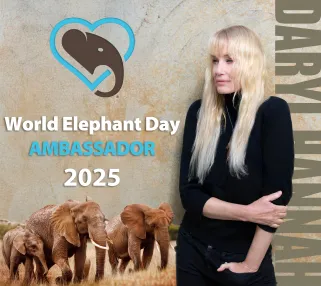
- Grants to community-led conservation initiatives across Africa and Asia — local organizations working every day to make human-elephant coexistence possible.

“They say that somewhere in Africa the elephants have a secret grave where they go to lie down, unburden their wrinkled gray bodies, and soar away, light spirits at the end.”
— Robert McCammon, Boy’s Life

“Of all African animals, the elephant is the most difficult for man to live with, yet its passing – if this must come – seems the most tragic of all. I can watch elephants (and elephants alone) for hours at a time, for sooner or later the elephant will do something very strange such as mow grass with its toenails or draw the tusks from the rotted carcass of another elephant and carry them off into the bush. There is mystery behind that masked gray visage, and ancient life force, delicate and mighty, awesome and enchanted, commanding the silence ordinarily reserved for mountain peaks, great fires, and the sea.”
— Peter Matthiessen, The Tree Where Man Was Born


 I began my conservation journey in Central Africa, helping to save the critically endangered mountain gorilla. As Director of the Dian Fossey Gorilla Fund, I helped launch over 30 community-based conservation projects — many of which are still running today. As a result, the mountain gorilla population grew by 50%.
I began my conservation journey in Central Africa, helping to save the critically endangered mountain gorilla. As Director of the Dian Fossey Gorilla Fund, I helped launch over 30 community-based conservation projects — many of which are still running today. As a result, the mountain gorilla population grew by 50%.